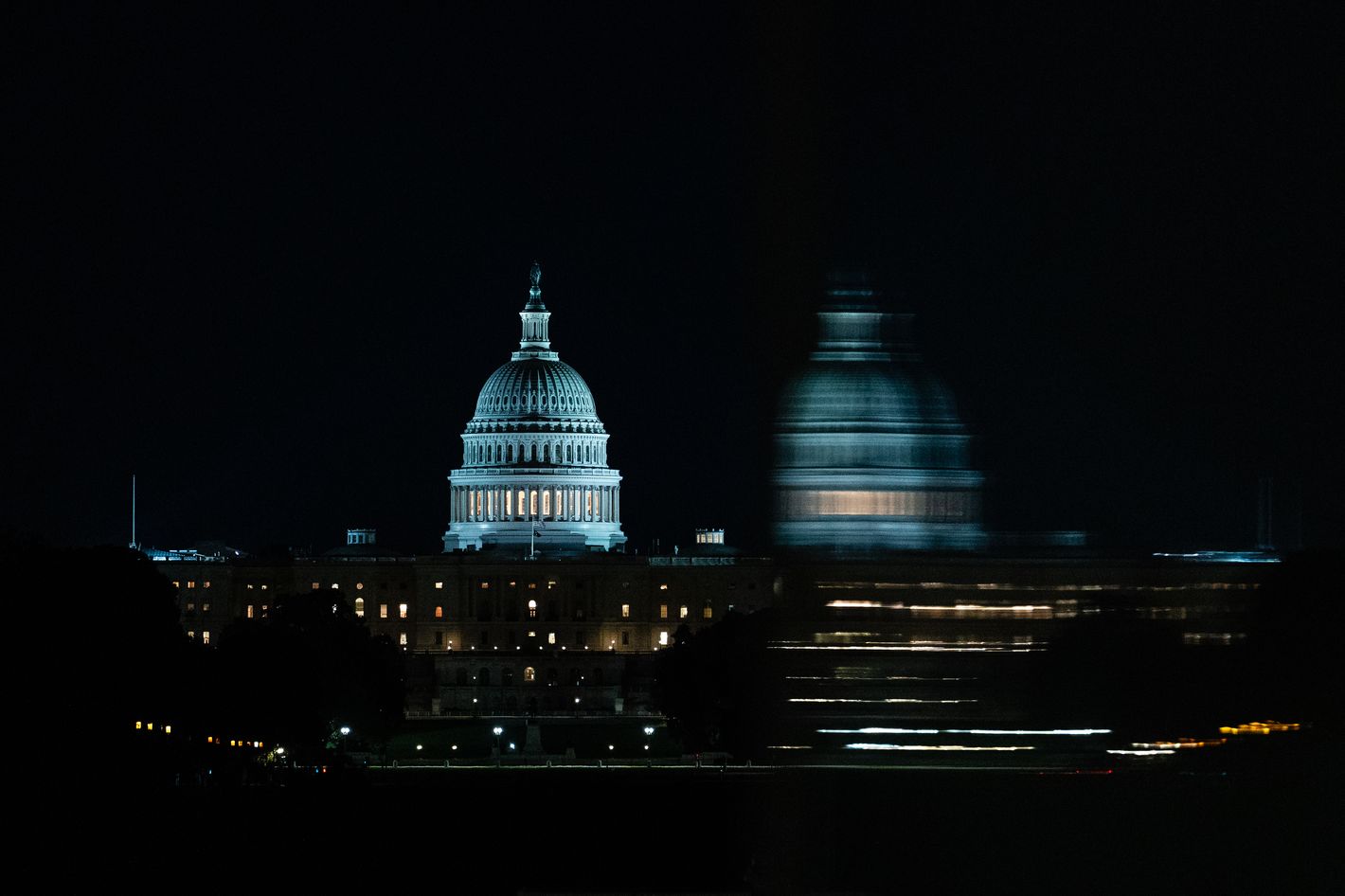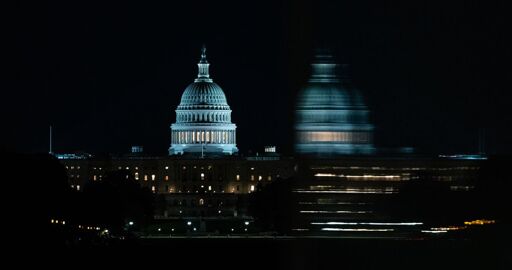 Photo: Eric Lee/Getty Images
Photo: Eric Lee/Getty Images
The federal government shutdown that began at the stroke of midnight on October 1 wasn’t an accident, a matter of miscommunication, or the result of congressional leaders getting behind on their paperwork. Both major parties went into it with eyes open, having for their own reasons spurned the negotiations that usually head off these destructive events at the last minute. It would be naive, then, to expect the shutdown to end quickly or simply.
Democrats have a fairly elaborate list of demands they want met before voting en masse to reopen the government. Republicans simply want it to reopen so that they and the Trump administration can continue to deploy their virtually unlimited power over federal policy, personnel, and spending. Democrats know their ability to interrupt appropriations with a Senate filibuster is their one and only source of leverage over national policy until the midterms, when they hope to break the GOP trifecta. Republicans know their policies as reflected in the One Big Beautiful Bill Act are relatively unpopular and are eager to cast the opposition as reckless extremists willing to damage the country to pursue their woke socialist dreams.
Both parties go into the shutdown mostly united and fully prepared to spin, spin, spin, with Democrats focused on expiring Obamacare premium subsidies and Medicaid cuts and Republicans making up fables about the trillions of dollars in health-care benefits Democrats want to give illegal immigrants. The soft underbelly of Democratic resistance is the same group of Senate Democrats who voted to avoid a shutdown back in March (three of them voted in favor of the Republican measure to keep the government open late yesterday); Republicans have to cope with swing-state House and Senate members who fear premium spikes if the Obamacare subsidies expire, and with House Freedom Caucus types with safe seats who would love to kill Obamacare entirely.
The wild card in all these power dynamics is President Donald Trump, who has shown time and again he can order congressional Republicans to fall into line and is thus the key to ending or perpetuating the shutdown. Trump is also in a position via his government-hating OMB director, Russell Vought, to make the shutdown the most painful ever. Vought is already threatening to turn the temporary furloughs of “unessential” federal employees every shutdown generates into permanent layoffs. These threats will be catnip to conservatives and torture for Democrats.
Because of the polarization of the parties over the issues that led to the shutdown, and the harsh war of words accompanying its advent, the odds are good that this suspension of government will not be brief. It’s significant that Trump presided over (and insisted upon) the longest shutdown in U.S. history, the 34-day event that began four days before Christmas in 2018 and ended in January. It immediately followed a midterm election in which Democrats flipped the House, broke a Republican trifecta, and denied Trump funding for his precious border wall. If Democrats decide they aren’t going to win concessions and simply want to create an opportunity for pre-midterm messaging, they might make keeping the current shutdown going past that 34-day mark their tactical goal. Anything less than that would expose them to the dreaded accusation that they’re unable to “fight Trump.”
As for the circumstances under which the shutdown might end, there are two obvious possibilities. The first is that Trump and the GOP hold the line on refusing to negotiate on health care or anything else until Democrats vote to reopen the government unconditionally. In that case, they would slowly ratchet up pressure on the Senate Democrats they need to pass the very stopgap spending measure that Democrats blocked just prior to the shutdown and gradually get to 60 votes. Once they’ve won the shutdown battle, Republicans might be willing to talk about bipartisan legislation to keep Obamacare subsidies alive, if only to share the blame for any premium hikes that will begin to appear well before the end of the year.
The second possibility is that a combination of public-opinion pressure and fears about the midterms convince the president to cut a deal on the Obamacare subsidies and impose it on his congressional allies in exchange for Democratic votes to reopen the government. Yes, Democrats have other demands, but the odds are close to zero that Trump would agree to repeal any parts of his beloved OBBBA (e.g., the Medicaid cuts), or that he would completely rein in his stampeding OBM director’s efforts to claw back spending. Would a narrow deal on Obamacare subsidies be enough to convince Democrats to end the shutdown? That’s not entirely clear, but it might be enough to convince the requisite eight Democratic senators to declare victory and vote to reopen the government.
There will, however, be a thousand devils in the details, in part because Democrats will be coping with the most untrustworthy negotiating partners imaginable. One immediate question is the form and length of the spending measure used to end the shutdown. There could be another short-term CR (continuing resolution, the Washington term for a stopgap spending bill), which might create a new shutdown crisis down the road. It could instead fund the federal government until this same point in 2026, but that would require negotiating all sorts of disputes over fiscal priorities. In the current atmosphere of mistrust and finger-pointing, it’s unclear if bipartisan appropriators will be able to quietly work out the hundreds of small deals that could together make the next spending bill palatable. And on top of everything else, Vought’s threatened punitive measures toward disfavored federal programs and employees could bring Democrats to the negotiating table or drive them to total defiance. In every past shutdown, furloughed federal employees have received full back pay. If Vought is in the process of laying off furloughed employees, back pay could be entirely beside the point.
It’s going to be a wild ride and, if you work for Uncle Sam, a period of intense fear and insecurity. The federal government will reopen eventually, but what it will look like when it does is very much up in the air.
More on Politics
The Government Shutdown Has Begun: Live UpdatesHow the Government Shutdown Will EndEx-Staffer Claims Romance With Adams in Book, Odd AI Video
From Intelligencer - Daily News, Politics, Business, and Tech via this RSS feed

